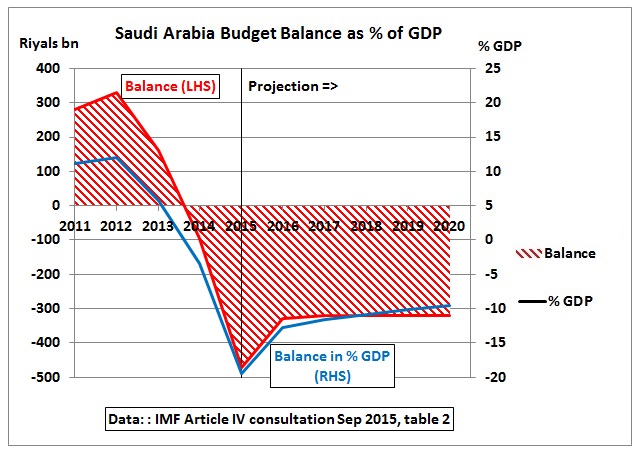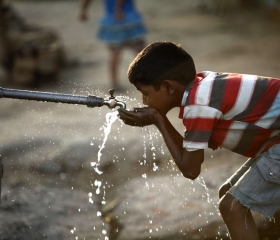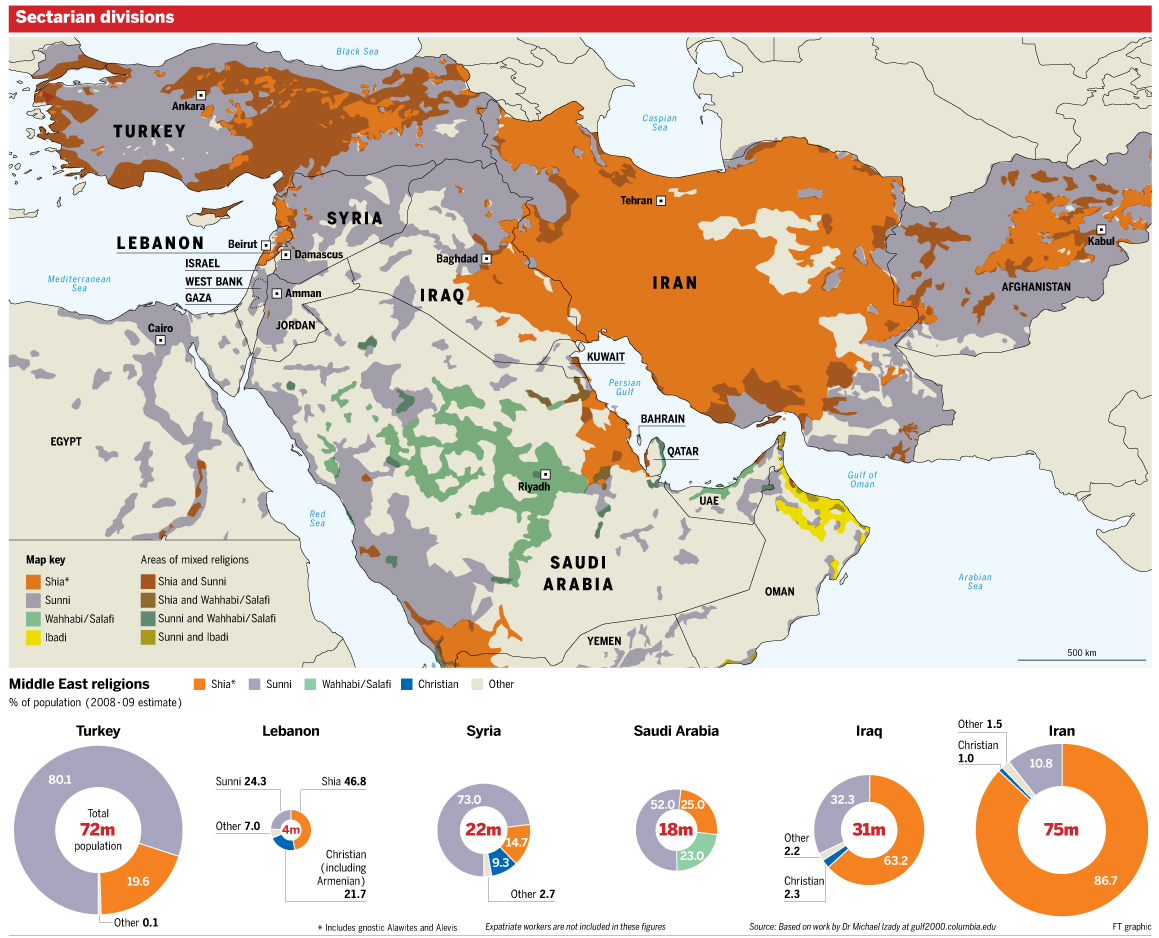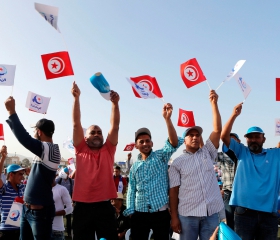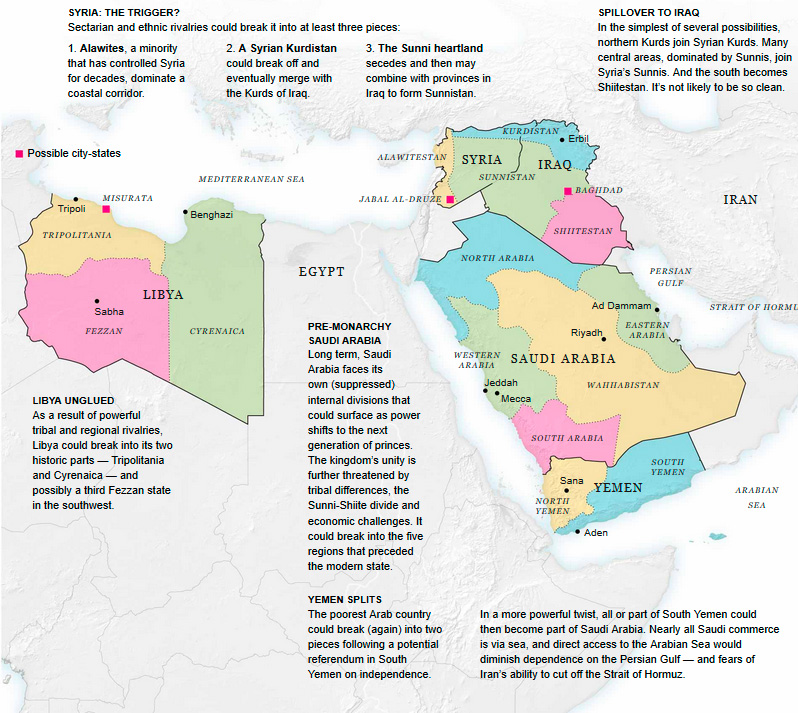Pessimism of Reason and Optimism of Will. The Arab World the Day After Tomorrow
Issa, 10 years old, assembles a locally
handmade mortar shell in a weapons factory
of the Free Syrian Army in Aleppo, 2013
In
Login if you are already registered
(votes: 1, rating: 5) |
(1 vote) |
PhD in Political Science, Deputy Director for Academic Work under the Institute of Oriental Studies, Russian Academy of Sciences, RIAC member
If tomorrow and the following year turn out to be different, if the situation in Syria and Iraq is not normalized, if no serious efforts are made to stop the violence and strengthen statehood in Libya, if the national dialogue in Yemen is not resumed; in short, if things remain as they are today and the wars in these countries drag on, then regional transformation will extend over at least another ten years.
Of course, the 100 years indicated in the title of the project is merely a poetic metaphor. In reality, we can only speak with some degree of certainty about two far closer forecasting horizons.
One is five or ten years away.
Let us assume that very soon somebody will win and somebody will lose the civil wars raging in the Middle East. Let us further assume that the conflicts that are tearing this world apart will be settled, or at least frozen, tomorrow or in a year’s time.
Then all the countries in the region would need about five years just to make up their minds about the main parameters of the new regional and country configuration.
If tomorrow and the following year turn out to be different, if the situation in Syria and Iraq is not normalized, if no serious efforts are made to stop the violence and strengthen statehood in Libya, if the national dialogue in Yemen is not resumed; in short, if things remain as they are today and the wars in these countries drag on, then regional transformation will extend over at least another ten years.
Finally, if the current conflicts spread to more countries, including the relatively shock-resistant Gulf monarchies, Jordan and Algeria, as well as Egypt, which seems to be stabilizing after two revolutions, all countries relatively untouched by the turmoil, then the turbulence may continue for longer still.
The system that will emerge by the end of this period (by around 2030) will probably exist for several decades (30–50 years) before the Middle East again plunges into chaos, the aftermath of which will have to be sorted out by new generations.
Thus, the arithmetic average of the long-term prognosis could be anywhere between 2030 and 2070.
This means that the second possible forecasting horizon is approximately 2050.
For all the vagueness with regard to the distant future, some things can already be discussed with a fair degree of certainty.
Socioeconomic Determinants
Within a few decades, the oil-exporting states will lose the advantages they enjoy today in the world energy market. They have already passed the peak of their oil production and, accordingly, they will either have to develop alternative sources of energy (above all solar energy) or drastically restructure their economies, diversifying them and distancing themselves from energy-dependent economies. The small Gulf States, Bahrain for example, are already following that path. But it is a big question whether others are ready to follow suit.
If these countries do not manage to adapt themselves to the new conditions, serious trials – economic degradation, increased conflict, a reversal to archaic societies (which are very traditional even now) and political radicalization – may lie ahead. The country most at risk, of course, is Saudi Arabia, which may have to deal with the problem even earlier: today, the kingdom needs relatively high oil prices (significantly, for the first time in many years, it is entering 2016 with its budget in the red) in order to meet its social obligations.
If in the coming years the political elite, institutions and society prove relatively resilient in responding to internal and external challenges and the ruling class manages to continue modernization, spreading it to the social and political spheres, then there is a chance that the kingdom will be able to transform itself successfully and thus occupy a new niche in the world economic and political systems.
However, there are two obvious obstacles in the way of this optimistic scenario becoming a reality. The surviving archaic political institutions in the context of social modernization make the political system still more backward and cumbersome, and less able to meet internal challenges; while the lack of modern civil institutions leads to society feeling alienated from the government. The combination of these two factors deprives the ruling class of the motivation for change, which it sees mainly as a source of threat, rather than as an opportunity to strengthen the system.
For the countries of North Africa, especially Maghreb, the dynamics of their relations with Europe will play the key role. Under favourable conditions, we can predict greater social and economic interaction and eventually even partial economic integration. The unfavourable scenario (including the deepening of the crisis within the European Union) suggests that Maghreb risks being thrown back in its socio-political development, which would increase social tensions and possibly political degradation.
The shortage of water, which is already a cause of conflict at all levels – from the local to the intergovernmental – may become even more acute. North African states have some resources to compensate for the deficit (for example, by using ground waters), as do have other countries. But it is unclear how they can be used realistically if political instability persists. If the water problem is not solved, we can predict growing conflicts, at least in relations between Egypt and Sudan, Syria and Israel, Syria and Turkey, Saudi Arabia and Yemen, Saudi Arabia and Jordan and Palestine, Jordan and Israel.
Looking at the social sphere, we can say with confidence that in 40 years’ time the Arab world will face a new demographic crisis. Those who are 25 now will be reaching retirement age. This is the generation that constitutes the so-called “youth spike”, whose employment problems were one of the causes of Arab Spring in Tunisia, Egypt and other countries. Thus, by the future period under consideration, the financial load on the economically active population in the region will increase, which may lead to greater social tensions.
Another social factor directly influencing the situation in the region is the system of gender and sex relations. If the current trend of moving towards an increasingly archaic social structure continues, including the specific ideas about the social role of women (not previously characteristic of the majority of Arab societies) – ideas that owe a great deal to Salafist discourse – and ideas about relations between the sexes, then the coming years will see continuing frustration among the Arab youth on that basis. The inability to lead a normal sex life before marriage, coupled with the increase of the marriageable age (primarily for economic reasons) and the increase of gender segregation, will fuel social tensions and social aggression.
Finally, we should mention the possible transformation of the social role of religion: it plays an important role today and apparently will continue to play such a role in the future.
Unless a new attractive ideology is formulated in the region (and the chances are that it will not, due to global rather than regional causes, such as the declining role of ideologies in the modern world in general) religious discourse and faith identities will remain the main sources of inspiration and production of meanings for the intellectual elite. The differentiation of interpretations of religious texts is likely to increase.
On the whole, religious transformation will depend on social transformation.
In those countries that have covered a greater distance on the path towards modernization, “the gates of Ijtihad” (the right to freely interpret holy texts) will open wider and wider, leading to the individualization of religion, and to some extent even its privatization.
Thus, Tunisia (under favourable conditions) will develop the national tradition of moderate Islam laid down by the Sadikiya School in the 19th century.
Egypt, if it solves some economic problems and speeds up modernization, may turn to the heritage of Muhammad Abduh and other early 20th century reformers.
The religious evolution of Morocco will probably see the development of Sufi schools that challenge archaic Salafism. However, the reverse is also possible, that is, “modern” Salafism (in the spirit of early 20th century reformers) could challenge “archaic” Sufism.
Regardless of the specific versions of development (depending on country characteristics) in all the steadily modernizing Arab societies, Islam may end up occupying the same place as religion in Anglo-Saxon countries. As a result, these societies may break with the tenets of “Islamic Reason” described by Muhammad Arkoun and turn to the tradition of “Islamic individualism”.
The underlying danger is that religion understood in this way ceases to be the basis of common values, which threatens atomization of societies and the proliferation of social cleavages.
At the same time, in the countries that face the arduous task of post-conflict rehabilitation, the role of religious identity will remain high. And religion may form the basis of the recreation of statehood and the system of social relations. These countries are more likely to see the development of Salafist Islam, which focuses on society and effectively consolidates and mobilizes it, not just lending higher meaning to man’s earthly existence, but investing it with higher social value. While such interpretations of religion may meet an urgent need at the first stage of the existence of societies post-conflict, they may gradually start to hamper social development.
The trend that will persist in the entire region is the religious homogenization of societies and the ousting of religious minorities. But this would be the result, not of events in 2050, but of the specific features of current conflicts.
Dynamics of Conflicts and the Differentiation of States
The dynamics of their development will be yet another factor determining the evolution of the Middle East. It is clear that under any scenario, many socioeconomic, political, religious and other knots of contradictions and development imbalances will remain in the Arab countries, making them particularly vulnerable to internal and external challenges. Their existence increases the likelihood of social and political crises, as well as conflicts of various degrees of intensity in the majority of countries in the region, including the countries that appear to be stable today, such as Algeria, Egypt, Saudi Arabia, etc. However, while it makes no sense to predict the emergence of new conflicts, the dynamics of current conflicts – in Libya, Syria, Yemen and other countries – that are less intensive will probably influence the map of the region and the whole character of its development for years ahead.
Each of the conflicts may follow one of three scenarios.
Under the positive scenario, statehood and governing institutions are restored throughout the state.
The moderately negative scenario would see the de facto fragmentation of states, including through their formal (con-)federalization, which, given weak or dysfunctional institutions, will in reality deprive the centre of its control over the periphery and create alternative centres of power and the potential for secession in the periphery.
Under this scenario, Libya may break into two or three states (more likely two); Yemen will break into two states; and Syria will break into at least three, although some experts predict up to a dozen possible variants.
Some parts of the disintegrated states may become parts of existing ones, with Cyrenaica joining Egypt, Syrian Kurdistan uniting with Iraqi Kurdistan, etc.
The result of fragmentation would be the emergence of weak and even unviable state entities deprived of economic development resources. The shortage of resources and weakness of institutions would sharpen the struggle within the elites, bringing the risk of new conflicts flaring up of and possibly further fragmentation.
Finally, the third – still more negative – scenario would see conflicts continuing for years, total degradation of state power institutions and an increasingly archaic society.
The two last scenarios make it highly likely that conflicts would continue to spill out into neighbouring countries – Jordan, Lebanon, Turkey, Saudi Arabia in the Syria–Iraq zone; and to Tunisia and Algeria in the Maghreb zone. However, this outcome seems to be slightly less likely here for purely geographical reasons (vast and sparsely populated territories in North Africa diminish the concentration of threats).
However, even under the most positive scenario, it is clear that total economic restoration of the strife-torn countries would take not a year or two, but at best ten to twenty years.
As a result, in the longer perspective, we will in any case see archaic societies that will have to build their economic and political structures practically from scratch.
If the positive – or at the very least, not the worst – trend prevails, there will be greater economic, social and political differentiation among the countries in the region.
In those countries that have been lucky enough to not be drawn into the vortex of conflicts, or have managed to get out of it relatively quickly and without incurring too much damage, the development of state institutions, civil society and social modernization will continue. There are three main candidates for this scenario: Morocco, Tunisia and Egypt. To these, we can add Algeria and the small Gulf States, primarily Bahrain, the United Arab Emirates and possibly Kuwait.
Of course, the process will proceed in its own way in each of these countries. The Maghreb countries will most likely draw on the experience of European modernization, while preserving its own specific features.
So far, Tunisia has advanced along the road of modernization more than others. It already has a civil society and democratic institutions that actually function, while traditional elements in the system of political relations, economics and social structure are less pronounced than in other countries. In spite of the current volatility of the internal political situation in the country, the authenticity and deep roots of civil institutions augur well for successful development, given a favourable regional situation and a diminished level of external threats.
If real reforms are initiated in the near future, Algeria may follow the Tunisian path towards modernization, with the process, like in Egypt, complicated by problems associated with socioeconomic development (the high illiteracy rate, poverty, strong traditional social institutions, etc.). Given the similarity of the political systems in Egypt and Algeria (the role of the Army and special services, high centralization of power, etc.), both states will continue to develop as presidential republics while the conservative element will be more noticeable than in Tunisia.
Finally, as regards Morocco, it will probably see continued delegation of the powers of the monarch to parliament and the government. This will result in the traditional elements of Alawite power becoming decorative elements of the political system. The legal norms in that country will continue to approach European standards, which, may at a certain point lead to increased internal tensions. The gradual Europeanization of the political system and the development of the social sphere will entail the modernization of society. As a result, first, the monarchy will gradually lose its sacred character and the royal house will see its authority diminished; and second, society will demand greater participation in the political process. At the same time, as soon as modernization puts the interests of the monarchy under threat, the latter, not wishing to renounce its economic and other interests, will have to take a conservative position, putting its stake on the traditional foundations of its power. All this may seriously aggravate the potential for conflict in the future.
In the small Gulf States, the process will proceed somewhat differently because the European influence there is weak and the starting base of their social and political modernization is low. Of course, the young Western-educated elite that is already beginning to occupy positions of power in these countries is capable of becoming the driver of progress. It may use the economic advantages that it still enjoys to speed up modernization processes, seeking among other things to strengthen state institutions and (much less likely) develop civil society institutions. If that is the case, then in 40 years’ time, i.e., by around 2056, these states will survive as monarchies; however, the role of the legislative branch and of civil society will be greater. At the same time, traditional elements of governance and traditional values will be felt more strongly than in Morocco, for example.
Although various scenarios may materialize in various Arab states – from positive to highly negative – the preservation of certain regional unity would make the total isolation of countries or sub-regions impossible. Therefore, it is impossible to predict that this or that scenario will come true in its pure form.
Regional Perspective
Облик региона во многом будет определяться не в последнюю очередь и протекающими в нем интеграционными процессами. Сегодня здесь есть три потенциальных очага субрегиональной интеграции: Персидский залив, Левант с Ираком и Магриб.
Considering the region as a whole, its look will be determined by several circumstances. We are talking first of all about integration processes. Today, there are three potential hubs of sub-regional integration: the Persian Gulf, Levant and Iraq, and Maghreb.
In the Persian Gulf, the integration processes carried out within the framework of the Cooperation Council for the Arab States of the Gulf (GCC) have advanced further than elsewhere in the Middle East. Given favourable development conditions in the Council’s member states, this trend will continue. But it is unlikely – even in the longer term – that it will commit itself to building strong supranational political institutions. Attention will most probably be focused on economic, military and possibly legal cooperation between states. The fear of losing political sovereignty will continue to determine the approach to integration processes for a long time to come.
If the integration process is launched at all In Levant and Iraq, it will proceed in the extremely difficult conditions of post-crisis development in the sub-region and the partial loss of independence in the world arena. While economic integration here appears to have little chance, some forms of political integration – for example, the creation of a large sub-regional confederation – may prove useful precisely for the purpose of mitigating conflicts and solving the problem of redrawing the map. In general, if the crisis of nation states continues on the global level and the trend of these states being replaced by other political entities persists, the implementation of ideas of democratic confederalism in the Levant may hold considerable promise.
Finally, East–West integration does not hold out much promise in Maghreb, as the political systems of the states in the region are diverse and largely (with the exception of Libya) self-sufficient, and their economies are not closely interlinked. It is more likely that some forms of economic integration will develop within the Mediterranean and along the North–South axis.
It would seem that in the long term the region will continue to be dependent on power centres outside the region. To some extent, the dilution of sovereignty will be a consequence of integration processes, the deeper integration of Arab countries in the global economic system and other aspects of globalization. In addition, this dependence will arise because these countries – which have lived through profound upheavals and conflicts – need massive economic aid. And this would saddle them with new obligations to the donors.
All this paints, if not a gloomy, then certainly a fairly alarming picture of the future, replete with conflicts, socioeconomic threats and political upheavals. To meet the future challenges, the Arab world will above all have to be able to look for creative ideas, discover new intellectual solutions, and draw on current world experience of modernization and state development. One resource for that may be the powerful Arab communities living in the West today, communities that are rapidly modernizing, but preserve their historical, cultural and religious identity. With conservatism gaining the upper hand in the West and increased isolationism in these countries, the notion of returning to their home country may grow in Arab communities in the West. And these returnees may become real drivers of progress, who would simultaneously contribute to the accelerated development of the Arab world and its socio-political harmonization.
(votes: 1, rating: 5) |
(1 vote) |


